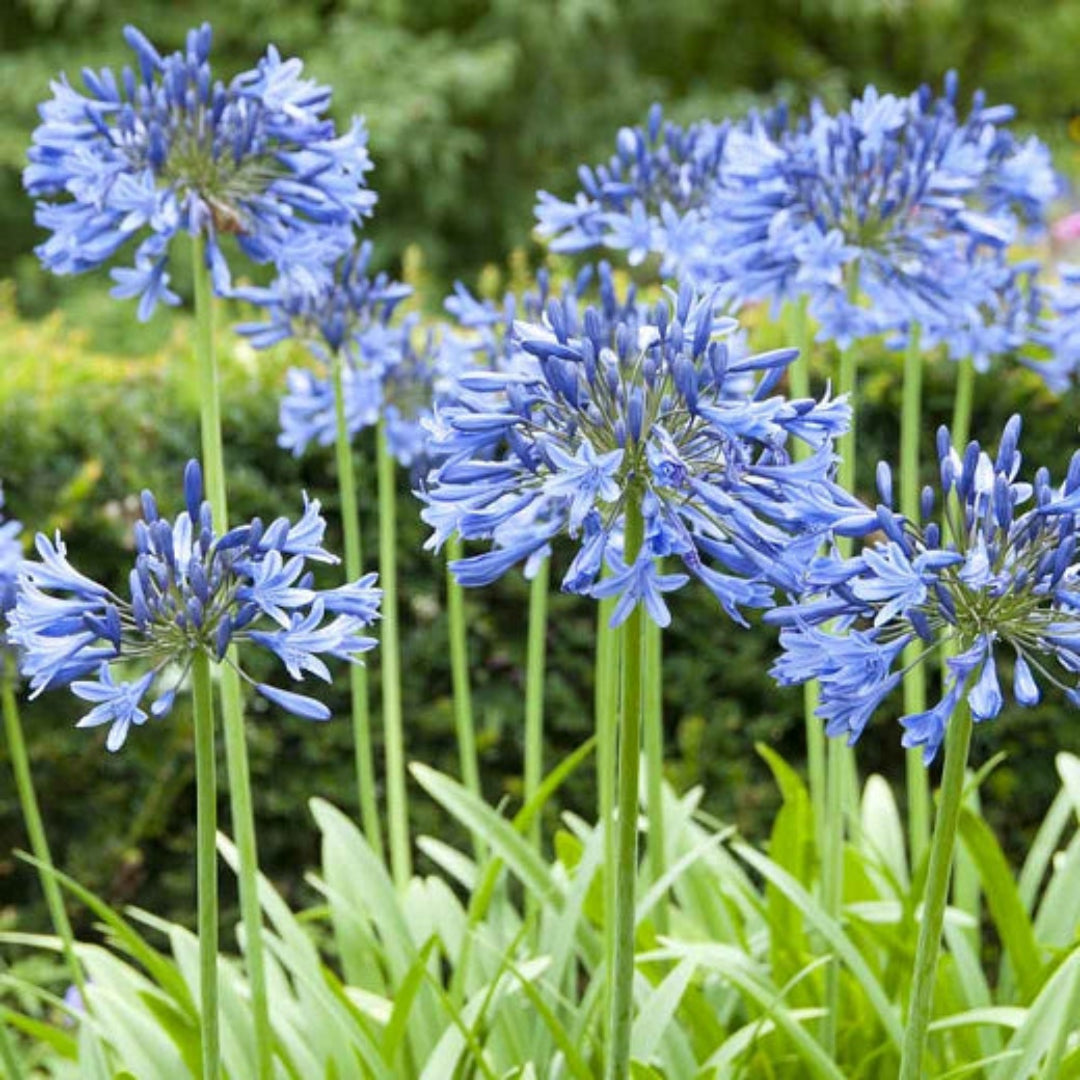Mastering the Art of Agapanthus Treatment: Necessary Actions for Healthy Development and Vibrant Blooms
In the world of cultivation, the cultivation of agapanthus stands as a gratifying undertaking for those who seek to support these sophisticated flowering plants. With their striking blooms and stylish foliage, agapanthus has actually recorded the focus of garden enthusiasts worldwide. However, attaining ideal growth and dynamic blooms requires a nuanced method that includes various essential steps. From selecting the ideal range to grasping pruning methods, the trip in the direction of growing growing agapanthus plants is multifaceted and holds the essential to unlocking the full potential of these herb treasures.

Picking the Right Agapanthus Variety

When picking the best Agapanthus variety for your yard, think about aspects such as climate viability, bloom shade, and development practice. Additionally, think about the climate in your area to make certain the Agapanthus range you pick can flourish in your specific conditions. Recognizing the growth behavior of different Agapanthus varieties is essential for correct placement within your yard.
Suitable Planting Problems
Considering the optimum ecological needs is important for successful Agapanthus growing. Agapanthus plants are delicate to cold temperature levels and should be secured from frost throughout winter months.
To ensure healthy development and dynamic flowers, plant Agapanthus light bulbs at a depth of about 2-4 inches and area them 8-12 inches apart. Including raw material, such as compost, to the soil can enhance drain and fertility, promoting durable origin development. Mulching around the base of the plants helps retain dampness and subdues weed development. Normal watering is critical, specifically throughout the growing season, to keep the soil consistently wet but not waterlogged.
Watering and Fertilizing Tips
Maintaining correct moisture levels and giving crucial nutrients are vital aspects in the treatment program for Agapanthus plants. When it comes to watering Agapanthus, it is critical to strike a balance. These plants favor continually moist dirt but are prone to root rot if overwatered.
Fertilizing Agapanthus is crucial for promoting healthy development and prolific blossoms. Use a well balanced fertilizer, such as a 10-10-10 formula, in the very early springtime as brand-new growth arises. Repeat this application every 6-8 weeks throughout the growing season. Prevent too much fertilizing, as it can cause lavish vegetation at the expenditure of blooms. Always follow the maker's guidelines for correct dilution and application approaches. By adhering to these watering and fertilizing ideas, you can guarantee your check my reference Agapanthus plants flourish and create dynamic, resilient blooms.
Pruning Strategies for Agapanthus
Pruning Agapanthus plants at the proper times and with correct methods is critical for keeping their wellness and promoting ideal growth and flowering. The optimal time to trim Agapanthus is in late winter season or early springtime prior to brand-new growth emerges.
Deadheading invested blossoms can likewise redirect the plant's energy right into creating more blossoms rather than establishing seeds. If you want to collect seeds for breeding, leave some flowers to completely dry and fully grown on the plant.
Keep in mind to use tidy, sharp devices to make accurate cuts and reduce the risk of introducing diseases. Agapanthus. Normal trimming will certainly assist keep your Agapanthus looking cool and healthy while guaranteeing a plentiful display screen of gorgeous flowers
Taking Care Of Usual Parasites and Conditions
After making certain appropriate pruning techniques for Agapanthus, it is important to deal with typical insects and illness that can influence the health and wellness and vigor of these plants. One usual insect that impacts Agapanthus is the Agapanthus gall midge.
Additionally, Agapanthus plants can endure from root rot if they are planted in improperly draining dirt. By being alert and taking prompt action against illness and hop over to here parasites, you can help your Agapanthus plants grow and produce vibrant blooms. Agapanthus.

Conclusion
In verdict, understanding the art of agapanthus treatment includes selecting the appropriate variety, supplying suitable planting problems, proper watering and feeding, proper pruning strategies, and resolving common pests and diseases. By complying with these important steps, you can ensure healthy and balanced development and vibrant blossoms for your agapanthus plants. Keep in mind to frequently check and keep your plants to promote their overall wellness and longevity.
To make certain healthy growth check this and vibrant blossoms, plant Agapanthus bulbs at a deepness of concerning 2-4 inches and area them 8-12 inches apart. By adhering to these watering and fertilizing ideas, you can guarantee your Agapanthus plants prosper and produce dynamic, resilient blossoms.
One usual parasite that affects Agapanthus is the Agapanthus gall midge. In addition, Agapanthus plants can experience from root rot if they are grown in poorly draining dirt. By following these vital steps, you can make sure healthy development and lively blooms for your agapanthus plants.